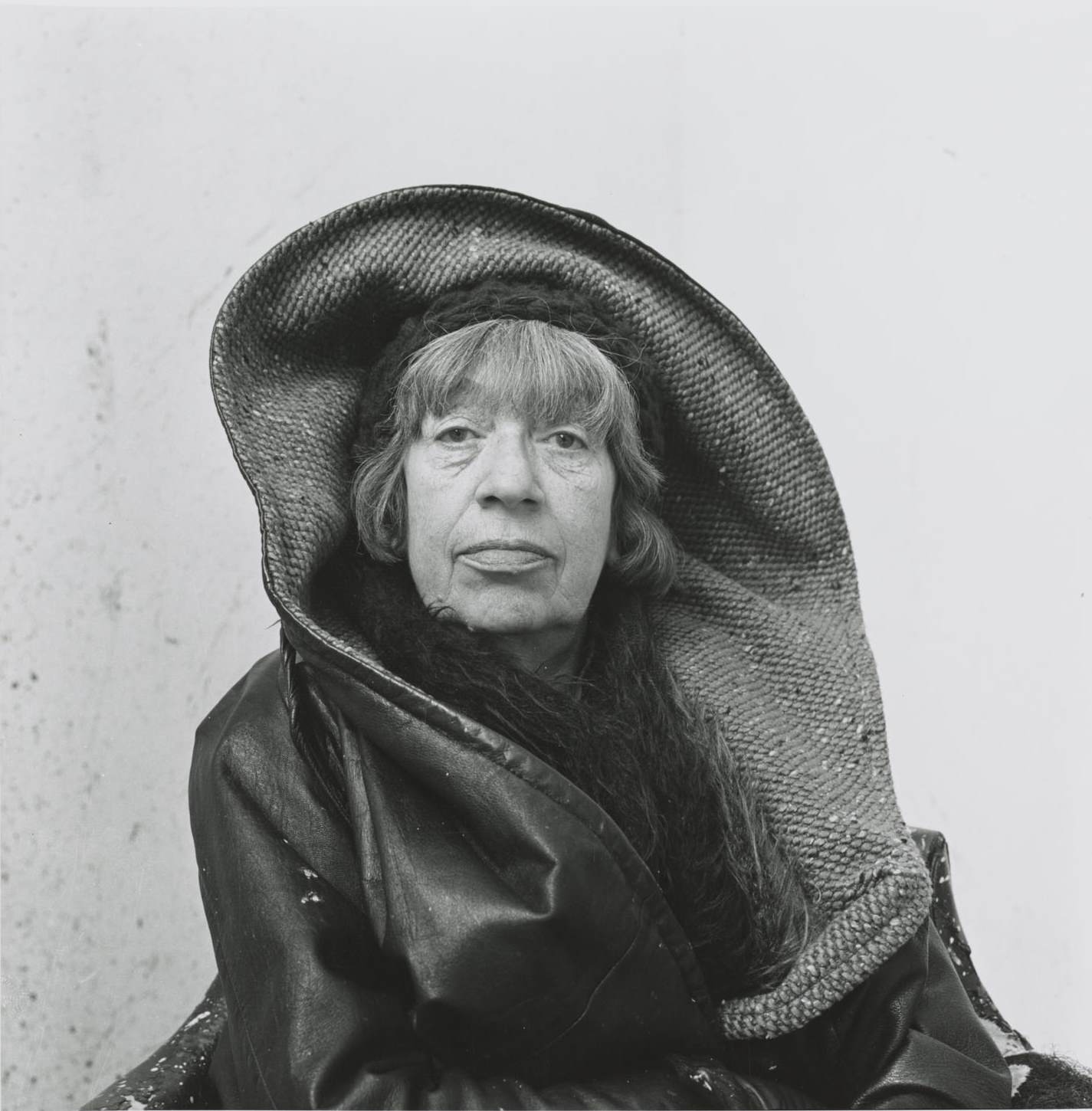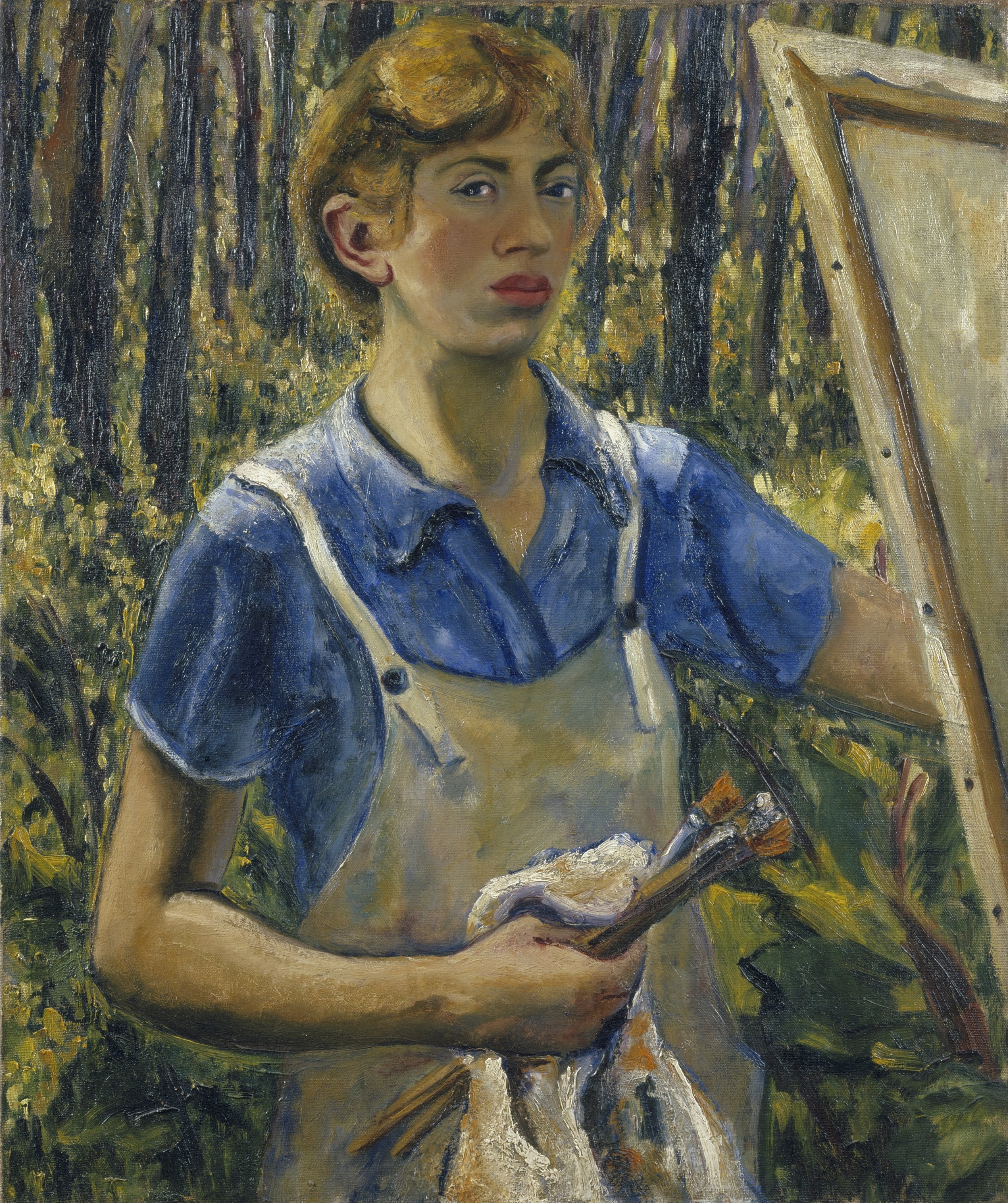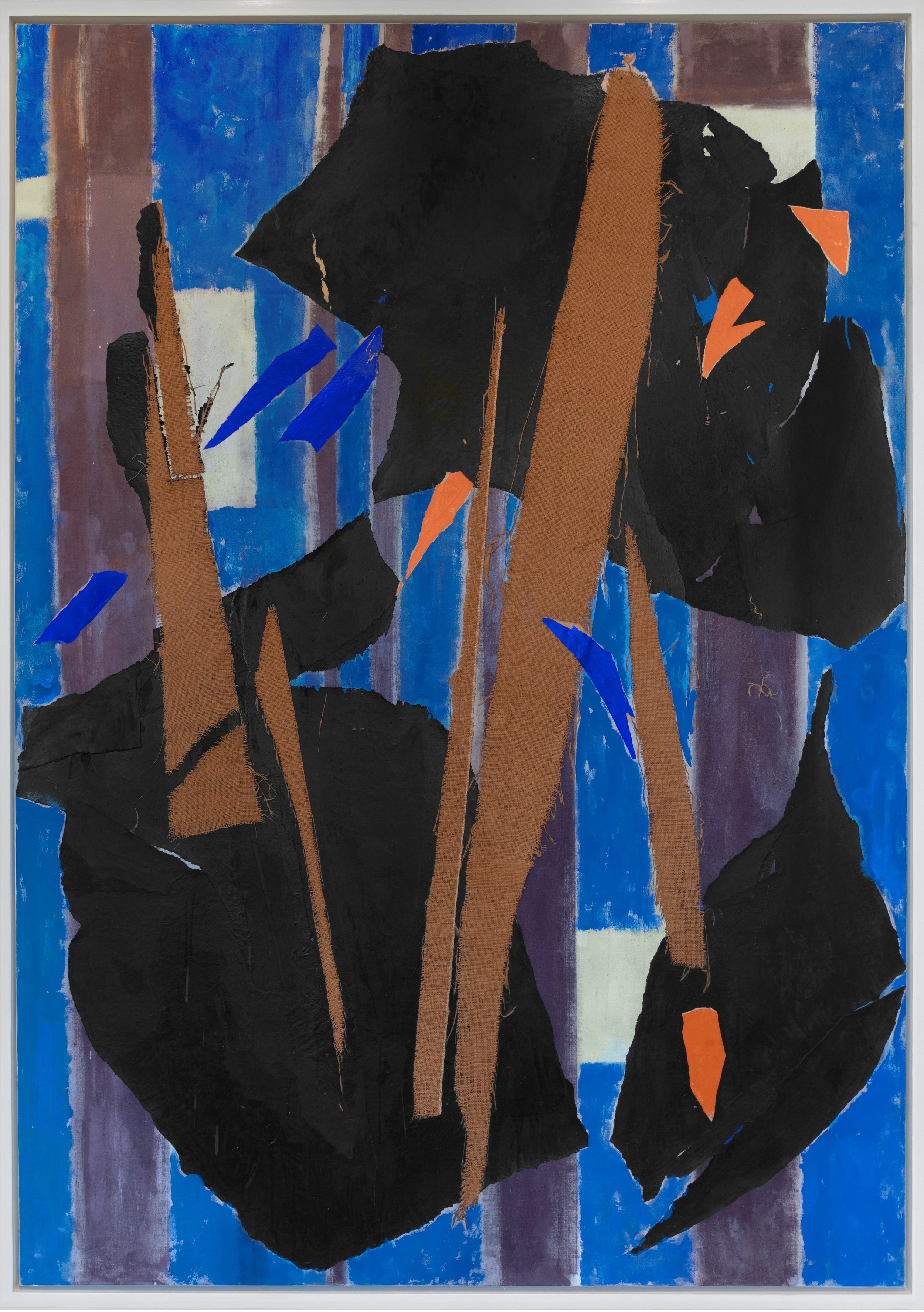Victoria Rodrigues O’Donnell visits Lee Krasner: Living Colour at the Barbican in London.

Lee Krasner, Springs NY, 1972
Photograph by Irving Penn
The Irving Penn Foundation
The Barbican is currently showing the first European retrospective of Lee Krasner’s work in over half a century. From early self-portraits, to wartime window displays, charcoal life drawings and vast abstract paintings, the exhibition features almost 100 works spanning her lifetime, many of which are being shown in the UK for the first time. Forget the myth-making and violent splashes long-associated with Abstract Expressionism, here is an artist whose Modernist roots led to a career tenaciously experimenting with colour, shape and form.
Lee Krasner was born in 1908 to Russian parents who had emigrated to Brooklyn, New York. Like many other Eastern European immigrants at the turn of the century, Krasner’s family fled anti-Semitic violence and travelled to the United States in the hope of a better life. Although she could not pinpoint the origins of her desire to become an artist, Krasner was determined to forge an independent living from her art and had decided on doing so from a young age. In an interview, she recalled: ‘I made no economic demands on my parents so in turn they let me be… I was not pressured by them, I was free to study art.’

Lee Krasner Self-Portrait, c. 1928 The Jewish Museum, New York.
© The Pollock-Krasner Foundation. Courtesy the Jewish Museum, New York.
Krasner had places at a number of prestigious institutions, including Washington Irving High, the only school in New York at the time to teach art courses for girls, and the National Academy of Design. The development of both her self-portraits and life drawings from this period are one of the most important aspects of the exhibition. Not least because tutors often found her output mediocre or would refuse to believe she could paint something like Self-Portrait (c. 1928) at all. Perhaps the most significant influence on her was studying under Hans Hofmann during the late 1930s. Hofmann was a German artist who had known Picasso, Matisse and Georges Braque while working in Paris. As a result, Krasner was taught a Cubist framework that she both respected and resented, particularly his propensity for making suggestions or corrections directly onto a student’s work.
The exhibition begins with Krasner’s series of ‘Little Images’, abstract works painted following her move to an area of East Hampton called Springs in 1945. These paintings aren’t quite the spontaneous, sweeping brush strokes associated with Abstract Expressionism. The application of paint feels minute, calculated and precise. The emerging patterns are reminiscent of those that Eduardo Paolozzi and Nigel Henderson would go on to make together ten years later. However, the most fascinating work in this section is Mosaic Table (1947). Consisting of mostly blues, oranges and greens, Krasner constructed the table top using coins, keys, broken glass and costume jewellery. The table sits proudly in the centre of the space – a stark difference to its origins as an old wagon wheel salvaged by Krasner during a bleak winter.
This tendency to collage or rework pre-existing creations runs throughout Krasner’s career and regarding this, she is known to have said: ‘I am not to be trusted around my old work for any length of time.’ When low and frustrated, Krasner had the habit of tearing up works – both old and unfinished – and repurposing them after a few weeks away from her studio. These new pieces, comprising of materials like torn newspaper, shreds of burlap and patches of paint, were shown to critical acclaim in 1955. Krasner would go on to do a similar series of pieces in the 1970s, this time using an old portfolio of life drawings from her time at the Hofmann school. Brightly coloured, large-scale works like Blue Level (1955) and Desert Moon (1955) have evolved into carefully composed shapes that slice across the canvas in a reinterpretation of her Cubist training.

Lee Krasner Blue Level, 1955
Private Collection.
© The Pollock-Krasner Foundation.
Photograph by Diego Flores
The rest of the show feels impassioned and urgent, as if an electric current runs through the canvases. Whether it’s the enormity of her ‘Night Journeys’, painted during a bout of insomnia following the death of her husband, or the eruption of colour and gesture in her ‘Primary Series’, Krasner engulfs the viewer. Paintings like Icarus (1964) and Siren (1966) are particularly dazzling once you’ve just been looking at the restrained palette in Polar Stampede (1960).
While visitors walk around the exhibition quietly contemplating the works on display, it’s only in the final section that you begin to hear a chorus of giggles erupt among the audience. They are all sat or stood around watching an archival film montage of interviews with Krasner. At a memorial held for her, the playwright Edward Albee said that Krasner ‘looked you straight in the eye, and you dared not flinch’. Upon seeing how sharp-tongued and direct Krasner is in these film clips, one leaves knowing exactly what Albee meant.
A number of critics have praised this long overdue recognition of Krasner’s place in the art historical canon, and yet in doing so, they have continued to discuss her work in relation to other, particularly male, Abstract Expressionists. Yet, I think the exhibition captures the sheer range and depth of her career in a way that couldn’t make her stand out more from her contemporaries, male or female. Looking back on her career, Krasner summed herself up perfectly: ‘I was a woman, Jewish, a widow, a damn good painter, thank you, and a little too independent…’
Lee Krasner: Living Colour is at the Barbican until 1 September 2019.
